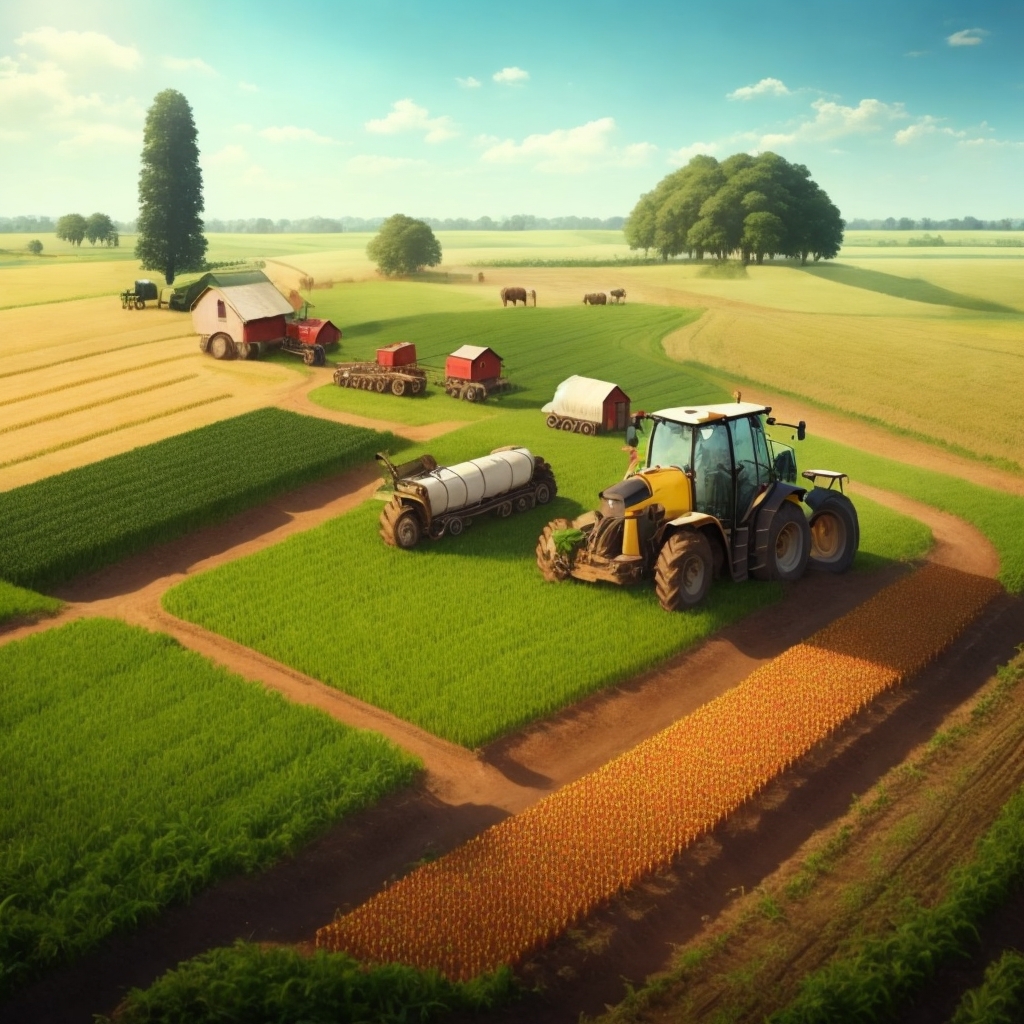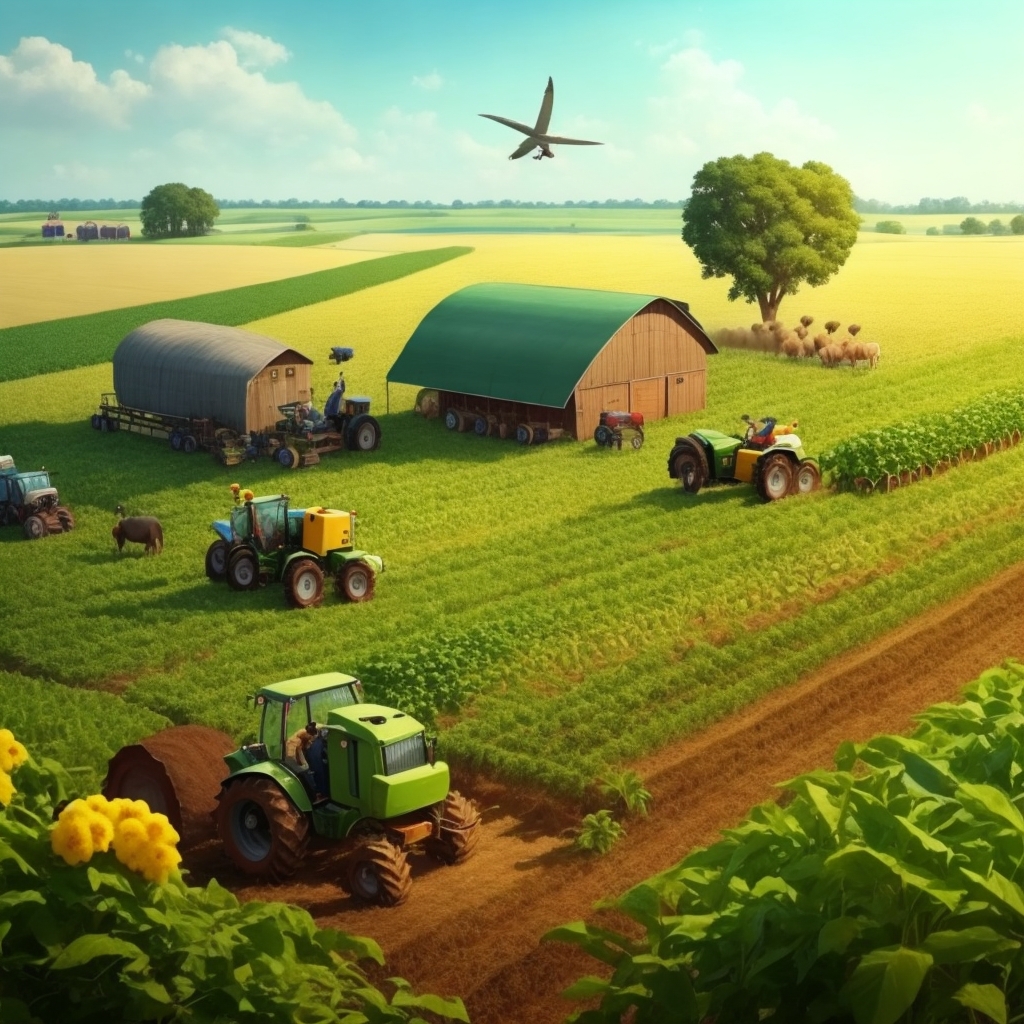**Introduction**
The agricultural sector plays a crucial role in the global economy, providing food, raw materials, and employment opportunities. Understanding the key trends in this industry is vital for policymakers, investors, and farmers alike. In this article, we will explore the top 10 insights into the key agricultural economy trends, highlighting the most significant developments and their potential impact.
1. Sustainable Farming Practices: A Growing Priority
As environmental concerns gain prominence, sustainable farming practices have emerged as a top priority in the agricultural industry. Farmers are increasingly adopting techniques such as organic farming, precision agriculture, and agroforestry to minimize environmental impact and enhance long-term sustainability. These practices not only protect the environment but also improve soil health, water management, and overall crop productivity.
2. Technological Advancements Revolutionize Agriculture
Technological advancements have revolutionized the agricultural landscape, empowering farmers with innovative tools and techniques. Precision agriculture, powered by technologies like drones, sensors, and satellite imagery, enables farmers to make data-driven decisions for optimized resource allocation, crop monitoring, and pest management. Moreover, automation and robotics have improved efficiency in labor-intensive tasks, reducing costs and increasing productivity.
3. Climate Change Adaptation: Resilience Becomes Essential
Climate change poses significant challenges to the agricultural sector, impacting crop yields, water availability, and overall productivity. Farmers are increasingly focusing on climate change adaptation strategies, such as crop diversification, improved irrigation systems, and the use of drought-resistant crop varieties. These measures enhance resilience against extreme weather events and help mitigate the adverse effects of climate change on agricultural production.
4. Rise of Vertical Farming and Urban Agriculture
With the global population on the rise and urbanization accelerating, the demand for locally sourced, fresh produce has increased. This has led to the rise of vertical farming and urban agriculture, where crops are grown in controlled indoor environments using hydroponics or aeroponics. Vertical farms maximize land efficiency, reduce water usage, and enable year-round production. Additionally, urban agriculture initiatives promote food security, reduce transportation costs, and minimize the carbon footprint associated with long-distance food supply chains.
5. Blockchain Technology Enhances Supply Chain Transparency
Supply chain transparency is a growing concern for consumers, who seek to know the origin and journey of the food they consume. Blockchain technology has emerged as a solution to this challenge, providing an immutable and transparent record of transactions and processes. By implementing blockchain-based systems, the agricultural industry can enhance traceability, reduce food fraud, and build trust between producers and consumers.
6. Shifting Consumer Preferences Drive Demand for Organic and Local Produce
Consumer preferences have undergone a significant shift towards healthier and more sustainable food options. This has resulted in increased demand for organic and locally sourced produce. Organic farming, which avoids synthetic pesticides and fertilizers, has gained traction due to its perceived health and environmental benefits. Similarly, consumers are increasingly prioritizing locally grown food to support local economies, reduce transportation emissions, and ensure freshness.
7. Digital Platforms Facilitate Agricultural Market Access
Digital platforms have transformed the way agricultural markets operate, providing farmers with enhanced access to buyers, information, and financial services. Online marketplaces connect farmers directly with consumers, reducing the dependency on traditional intermediaries. Moreover, digital platforms offer real-time market information, weather updates, and advisory services, empowering farmers to make informed decisions and optimize their market participation.
8. Investment in Agri-Tech Startups Soars
The agricultural sector has witnessed a surge in investments in agri-tech startups. These startups leverage technologies like artificial intelligence, machine learning, and big data analytics to address various challenges in farming, including yield optimization, disease detection, and supply chain management. Investment in agri-tech startups fosters innovation, accelerates technology adoption, and supports the development of sustainable agricultural practices.
9. Changing Demographics: Aging Farmers and Rural-Urban Migration
Demographic shifts pose significant challenges to the agricultural industry. The aging farmer population, coupled with rural-urban migration, raises concerns about the future of agriculture. Efforts to attract younger generations to farming through education, training, and financial incentives are crucial for ensuring a sustainable agricultural workforce. Additionally, policies that promote rural development and infrastructure improvement can address the challenges associated with rural-urban migration.
10. International Trade and Market Dynamics Shape Agriculture
International trade and market dynamics play a pivotal role in shaping the agricultural industry. Changes in trade policies, tariffs, and market access agreements have a direct impact on agricultural exports and imports. Moreover, geopolitical factors and global economic trends influence commodity prices, supply chains, and investment flows in the agricultural sector. Understanding and adapting to these market dynamics is essential for agricultural stakeholders to navigate the ever-changing landscape.
FAQs
**1. What are the key trends in the agricultural economy?**
The key trends in the agricultural economy include the adoption of sustainable farming practices, technological advancements, climate change adaptation, the rise of vertical farming and urban agriculture, blockchain technology for supply chain transparency, the demand for organic and local produce, digital platforms for market access, investment in agri-tech startups, changing demographics of farmers, and the influence of international trade and market dynamics.
**2. How are sustainable farming practices beneficial?**
Sustainable farming practices promote environmental stewardship, enhance soil health, improve water management, and increase overall crop productivity. These practices also minimize the use of synthetic inputs, reduce pollution, and contribute to long-term agricultural sustainability.
**3. What is the role of technology in agriculture?**
Technology plays a crucial role in agriculture, empowering farmers with tools and techniques for precision agriculture, automation, and data-driven decision-making. Technologies like drones, sensors, satellite imagery, and robotics enhance efficiency, reduce costs, and optimize resource allocation in farming operations.
**4. How does climate change impact agriculture?**
Climate change impacts agriculture through changes in temperature, precipitation patterns, and extreme weather events. These factors affect crop yields, water availability, and overall agricultural productivity. Adaptation strategies, such as crop diversification and improved irrigation systems, help farmers build resilience against the adverse effects of climate change.
**5. What is vertical farming?**
Vertical farming is a method of cultivating crops in vertically stacked layers or towers, often in controlled indoor environments. This approach maximizes land efficiency, reduces water usage, and enables year-round production of fresh produce. Vertical farming is particularly relevant in urban areas where space is limited.
**6. How does blockchain enhance supply chain transparency in agriculture?**
Blockchain technology provides an immutable and transparent record of transactions and processes. Implementing blockchain-based systems in agriculture enhances supply chain transparency by enabling traceability of food products, reducing food fraud, and building trust between producers and consumers.
Conclusion
The agricultural industry is experiencing significant transformations driven by sustainable practices, technological advancements, and changing consumer preferences. Adapting to climate change, leveraging digital platforms, and embracing innovative technologies are crucial for the sector’s long-term growth and sustainability. As we navigate the future of agriculture, understanding these key trends and their implications is essential for stakeholders across the agricultural value chain.


